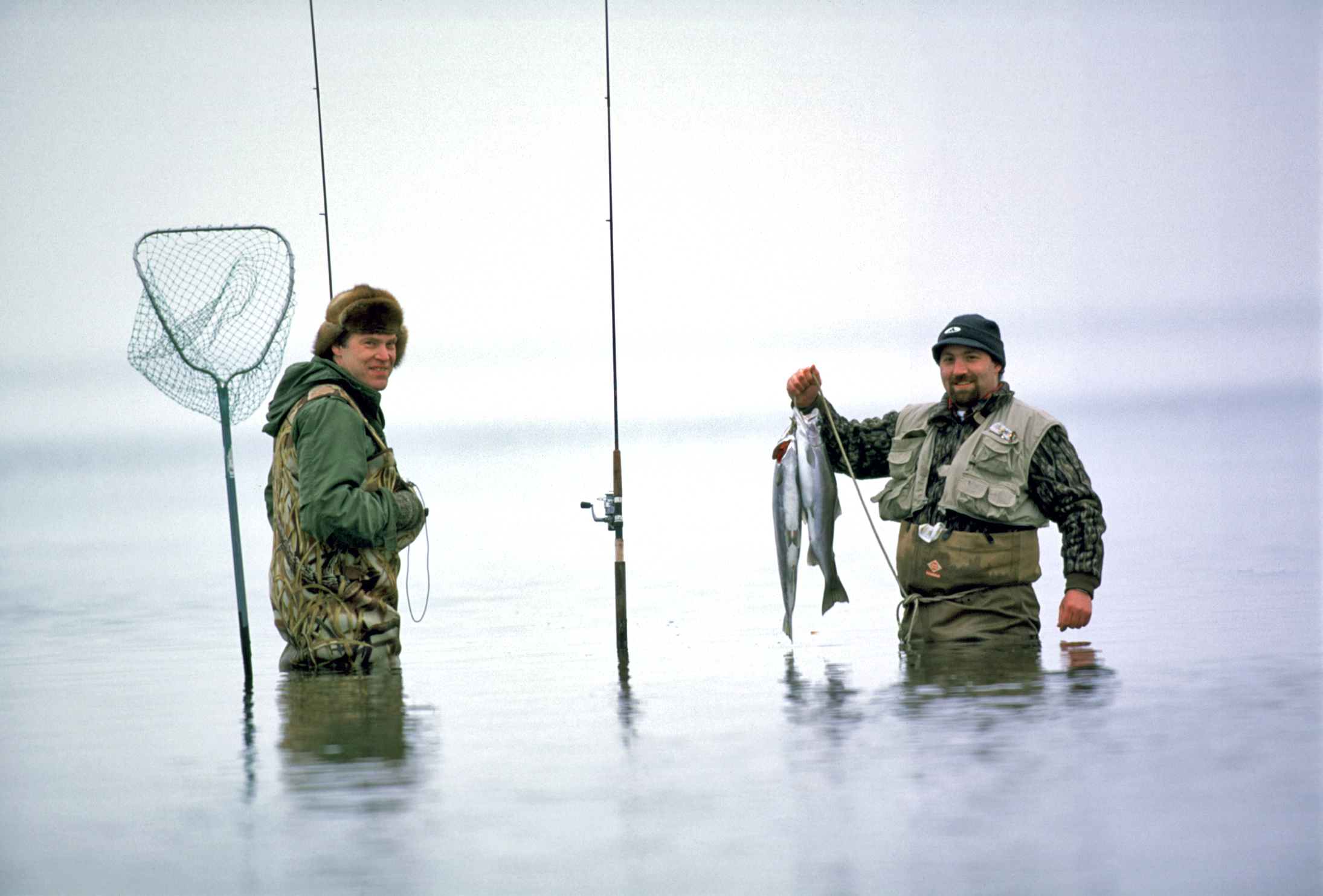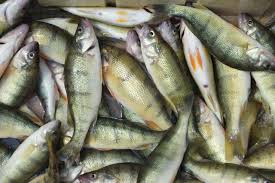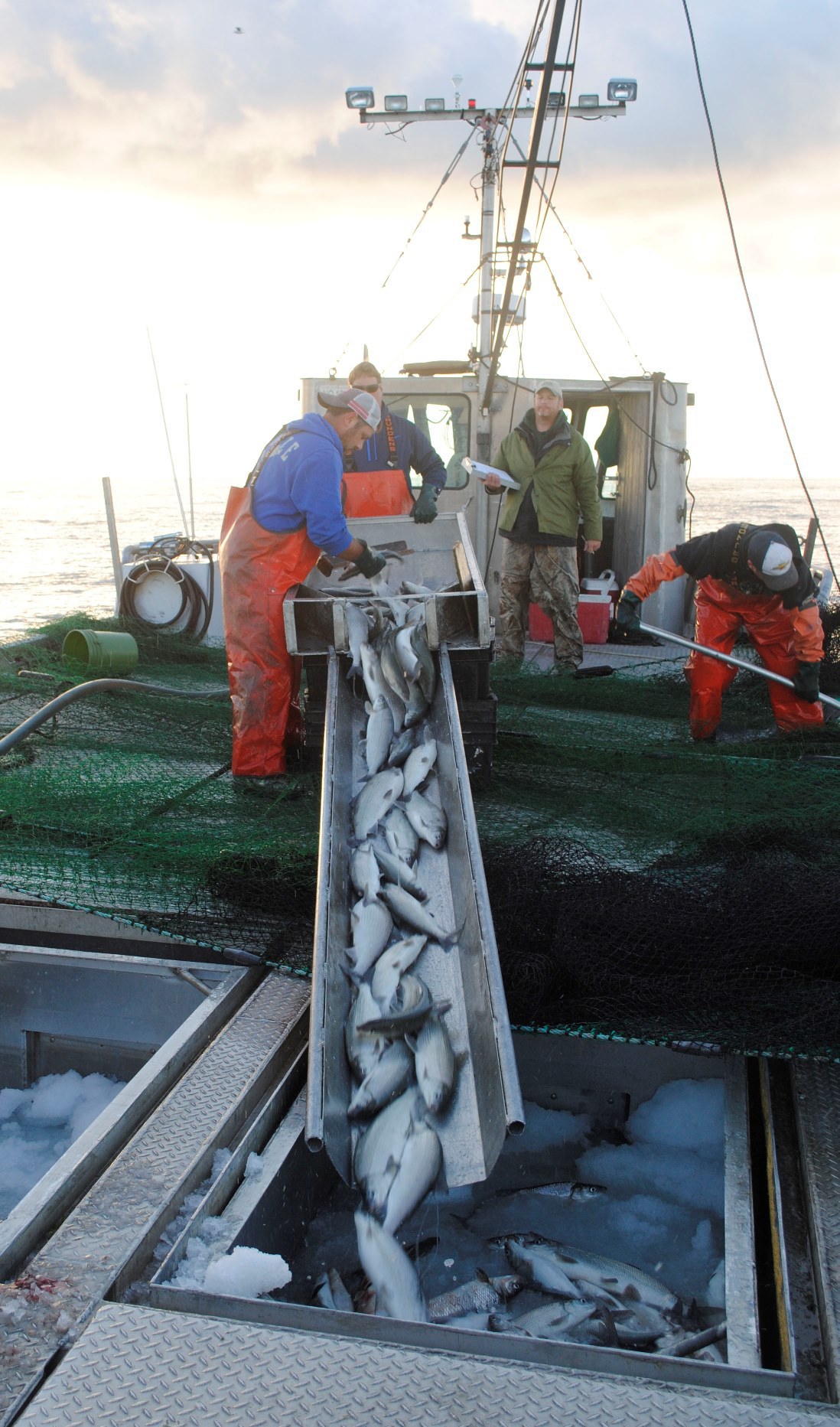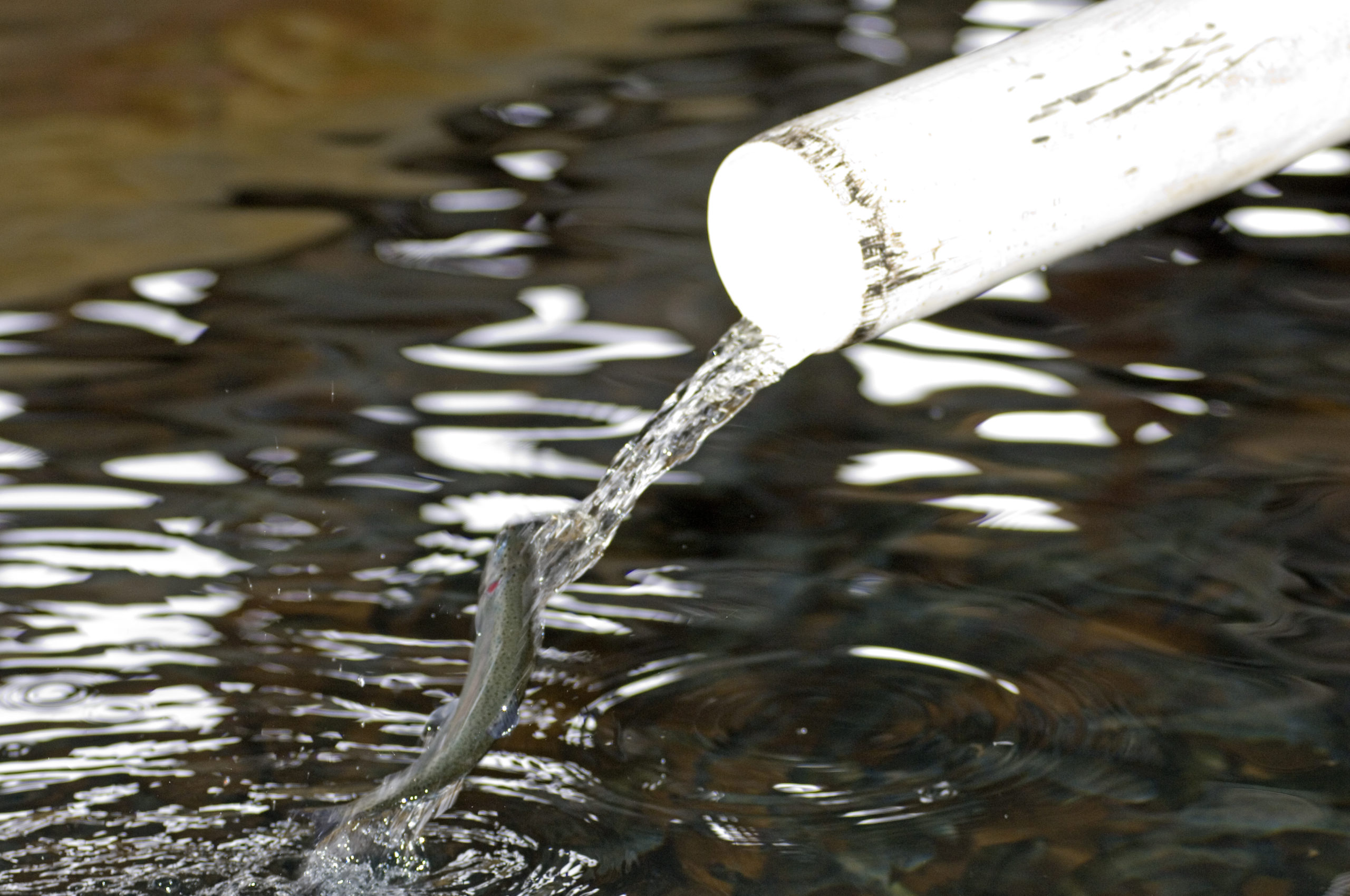
The total allowable catch (TAC) for yellow perch and walleye went up this year in Lake Erie. The raise is indicative of booming walleye population in recent years as well as a healthy perch population in most areas of the lake.
The walleye TAC rose 18% from 12.28 million fish in 2021 to 14.53 million this year, with yellow perch rising 15% from 6.23 million pounds last year to 7.18 million pounds this year. The TAC is designated as the maximum amount of fish that can be taken during the season. After the TAC is determined by the Lake Erie Committee (LEC), jurisdictions on the lake decide how much each one gets and how to divide the TAC between commercial operators and recreational anglers.
“Yellow perch and walleye have a TAC assigned to them because they’re the two highest value species and have the most targeted effort from both sport and commercial interests,” said Travis Hartman, Lake Erie program administrator with the Ohio Department of Natural Resources (ODNR).
Other species like bass, sunfish, catfish and the like are governed each year by size, season and creel limits, though are not assigned a TAC, Hartman said.
Developing the TAC for Lake Erie requires cooperation between managers in Ohio, Michigan, Pennsylvania, New York and Ontario. New York and Pennsylvania waters are considered to be non-TAC areas for walleye, meaning they host many migrating walleye but not a lot of spawning habitat. The two states record and submit data each year to help develop the walleye TAC and each manages its waters appropriately to stay within TAC numbers, according to Hartman.
That leaves Ontario, Michigan and Ohio with the bulk of the fish, Ohio claiming 51 percent. There isn’t any commercial walleye fishing in Ohio, although most of the walleye taken in Ontario waters are netted by commercial operators.
Yellow perch doing great in most of Lake Erie

Yellow perch are one of Lake Erie’s two hottest commodities. Along with walleye, the two species’ harvest are governed by an annual TAC figure. (Photo Credit: James Proffitt)
When it comes to yellow perch, Lake Erie is divided into four management units (MU) because the fish, unlike walleye, are considered homebodies. Tagging studies show that yellow perch migrate up to about 25 miles between where they were tagged and where they were caught. In comparison, walleye tend to be wide-ranging fish known to migrate 150 miles or more.
In three of the four MUs, yellow perch TACs increased, though in one area of Lake Erie, yellow perch populations have plummeted in recent years.
“The population is low,” Hartman said. “We haven’t seen any significant hatches or recruitment lately so there’s no expectation of it improving until we get a good hatch.”
For that reason, the daily limit set by the ODNR in that zone is 10 fish. In Ohio’s two other MUs, the limit is 30 fish per day per angler. Hartman said a very low success rate in that zone recently means fewer and fewer anglers are targeting yellow perch each year.
“My personal opinion is that fishing results have led to lower amounts of effort,” Hartman said. “If you go out and don’t catch them a few trips in a row or in this case a few years in a row, it wouldn’t surprise me if some people are looking at that daily limit and saying ‘Wow! Even if I have a good day it’s just not worth it.’”
Lake Erie walley: Lots of new fish year after year

Walleye are one of the two species Ohio fisheries managers use TAC to manage. (Photo courtesy of ODNR via James Proffitt)
Ohio rules for Lake Erie management state that whenever the walleye TAC is above 3 million fish in Ohio waters, the daily limit is six fish all year long with a 15-inch minimum size. Currently, the 2022 TAC is at 7.4 million, so there are plenty of walleye and will be for the foreseeable future according to Hartman.
“We run this population model and the LEC works with stakeholders and experts like the Quantitative Fisheries Center at Michigan State University,” he said. “We develop harvest policies that are applied to the population, and with an 18 percent increase, things are looking pretty good for walleye.”
Recent walleye hatches on Lake Erie have been record-setting, according to the ODNR. Successive years of excellent hatch results are expected to keep walleye populations, and limits, high for many years.
How the numbers are compiled each year
Fisheries managers in the five jurisdictions contribute data to the LEC’s technical task groups every year, one for walleye and one for yellow perch. Biologists in those groups use a number of tools to determine likely fish populations and current trends in both fish and those who aim to catch them.
Ohio fisheries managers conduct dozens of trawls throughout the state’s waters to see how many fish they find and what their sizes are. Other members of the LEC do the same thing in their waters and the data is put together each year to determine the TAC for the following season.
In addition to hitting the lake for information, managers hit the shores, too. Creel surveys are an important part of the process. They involve interviewing anglers in-person. In Ohio, six are based on Lake Erie and one each on the Sandusky and Maumee rivers.
Creel clerks are usually college students or recent graduates with a background in fisheries management. They gather information about what people caught, how much they caught or released, how much time they spent fishing and related information. Creel clerks also count anglers on the water and boats at launch ramps. This data is compiled with trawl samples and other information to help biologists make decisions about the next TAC.
Michigan TACs: Lake trout and whitefish

Fisheries managers in Michigan utilize data from commercial and sport anglers to assess populations and decide on the next season’s TAC. (Photo courtesy of MDNR via James Proffitt)
While Lake Erie managers balance the yellow perch and walleye harvest between recreational anglers and commercial interests, Michigan fisheries managers work with tribal managers to divide two of their most important species, lake trout and whitefish.
“In lakes Huron, Michigan and Superior, in 1836 Treaty waters, we have TACS,” said Jim Dexter, chief of Michigan Fisheries Division. “Lake trout is the most important one because it’s shared between tribes and recreational anglers. Lake trout have historically been reserved for the recreational fishery and with whitefish, that’s primarily reserved for the commercial fishery, both state licensed fishers and tribal fishers.”
Dexter said they use models similar to those in Lake Erie to determine population sizes and what the harvest limits should be. And depending upon the population sizes, the TAC can change year-to-year, though not too much.
“We have a process that limits the amount of change to 15 percent,” he said. “The reason is anglers, both commercial and recreational, like to have some level of stability. For instance if I’m a Lake Erie walleye angler I’m not going to be too happy if the limit goes from six to two in one year. But if it’s ratcheted down over time for whatever reason, they understand that.”
But unlike Lake Erie, where there are only a handful of management zones, Michigan must contend with a staggering 24 zones. Like the LEC, committees for Michigan’s lakes pull information from creel samples, independent surveys from the state’s Native American tribes, trawl samples and sampling what commercial fishing boats are catching in addition to data about fishing gear, time nets are in the water and locations.
“All that information goes into our tables and our models to help figure out where things are going to be in the future,” Dexter said. “And included in our data are forage fish surveys. We spend a couple weeks each year on the lakes evaluating forage and in fact, for a lot of our managers, understanding the forage is more important than understanding the predators themselves.”
Because a number of fish, like trout and salmon, are stocked in the lakes, food availability is an important consideration.
“Forage fish are small and hard to evaluate, so we do a lot of acoustic work throughout the Great Lakes to figure out what their biomass is,” Dexter said. “Then we can calibrate our stocking because we certainly don’t want to stock fish and have them eat all the food.”
Three lakes and mobile fish make it difficult

Michigan managers’ TAC numbers take into consideration both harvest of fish and stocking programs for fish like salmon and trout. (Photo courtesy of MDNR via James Proffitt)
Getting a handle on the lakes’ fish populations is easier said than done according to Steve Lenart, a research biologist at MDNR’s Charlevoix Fisheries Research Station.
“They move around,” he said. “Using acoustic telemetry we’re trying to get a better handle on these various stocks so it’s really a critical piece of the puzzle. And we’re getting better and better information, so we know where these fish were stocked and where they were captured.”
Lenart said marking stocked fish, like lake trout, has been an efficient process for tracking populations. It’s done through an automated process in a large trailer, clipping fins and inserting tags in millions of stocked fish each year. That helps fisheries managers more accurately assess populations by tracking their numbers and their movements.
TAC limits for lake trout have trended up recently with 8 of 9 management zones in the three lakes rising this year, which is about 10 to 15 percent.
But some fish numbers, like whitefish in lakes Huron and Michigan, are trending downward.
The harvest limit in seven of ten management zones in those lakes was down significantly from 2021 to 2022. Two zones went from a harvest limit of 1.28 and 1.08 million pounds in 2021 to 717,000 and 288,000, respectively, a drop of 57 percent. The other zones suffered similar decreases.
Lenart said part of the decrease may be because of scientists’ previous over-estimate of recruitment, meaning how many fish successfully emerged from spring spawning. He said going forward, population models will reflect the most current information available on Michigan’s Great Lakes fish.
“The challenge now will be to reflect what the lakes can produce in terms of expectations,” he said. “We have a really good process in place now but the answers may not be satisfactory to folks who are trying to make a living or are trying to fish recreationally and that’s going to be a challenge for sure. It’s going to be a little uncertain what the future holds. In terms of lake trout they are doing pretty well in most of the areas we assess. It’s really the whitefish stocks that has caused some challenges, for sure.”
Catch more news at Great Lakes Now:
Get personal with Lake Erie and walleye on a kayak
State outdoors operations emerge stronger after the pandemic
Featured image: Sport angling in Michigans TAC-regulated waters are greatly benefitted by carefully managed TAC numbers each year. (Photo courtesy of MDNR via James Proffitt)
1 Comment
-
Looks like the photo at the top shows some sort of salmonids, likely trout.




